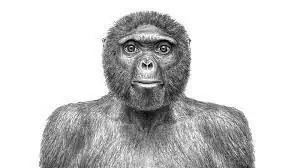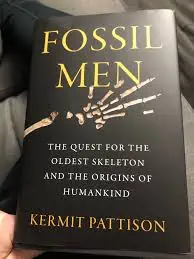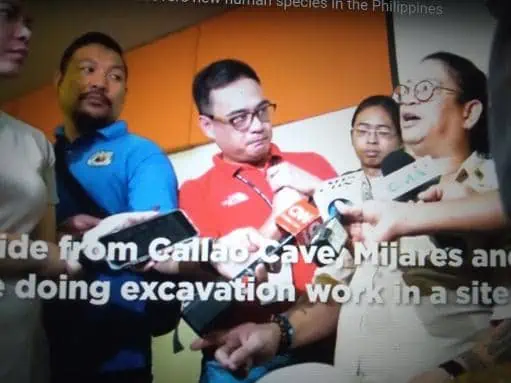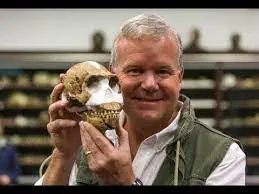Tim White, co-discoverer of Ardipithecus ramidus, says Berger moves too fast announcing his finds
Tim White obtained his PhD in biological anthropology from the University of Michigan. He went on to accept a position on the faculty at the University of California-Berkeley. His specialty was early to middle Pleistocene African hominins.
From Britiannica:
 he took part in an expedition to Tanzania headed by anthropologist Richard Leakey. He later worked with Leakey’s mother, Mary Douglas Leakey, studying fossilized hominin footprints.
he took part in an expedition to Tanzania headed by anthropologist Richard Leakey. He later worked with Leakey’s mother, Mary Douglas Leakey, studying fossilized hominin footprints.
White continued his engagement with Africa, returning to the continent many times over the following decades. Some of his most significant finds were made in the early 1990s in the middle Awash River valley of northern Ethiopia…
There in the Awash, White and his team made a huge discovery, 3.4 million year old skeletal remains of an Australopithecus afarensis, Lucy’s species. That propelled him into legendary paleo-anthropological status.
Earlier in 1974, Donald Johannson and his grad student Tim Grey had discovered Lucy while on a fossil hunting stroll at Hadar, Ethiopia.
From Nature.com, 2015:
Johanson and his colleague, Dr. Tim White, studied the collection of East African fossils very carefully, paying close attention to the variation among the specimens, and considered whether the East Africa fossils represented a single species or more than one species (Kimbel and Delezene, 2009). They presented their findings to a team of researchers and the group ultimately agreed that Lucy was part of a single, previously undiscovered, species of hominin. This newly identified species, Australopithecus afarensis, was announced by Johanson in 1978.
Tim White: “virtuoso skills in the field… [but] a propensity for making enemies”
 Years of controversy, intense rivalries and battles in the media followed, over phylogeny (classifications) and species naming, with Tim White always seemingly in the center. White, despite his expertise and knowledge level, has often been described as having an abrasive personality.
Years of controversy, intense rivalries and battles in the media followed, over phylogeny (classifications) and species naming, with Tim White always seemingly in the center. White, despite his expertise and knowledge level, has often been described as having an abrasive personality.
From the 2020 Bestseller (barnesandnoble.com), “Fossil Men: The Quest for the Oldest Skeleton and the Origins of Humankind”:
acclaimed journalist Kermit Pattison brings us a cast of eccentric, obsessive scientists, including White, an uncompromising perfectionist whose virtuoso skills in the field were matched only by his propensity for making enemies.
In 1994, White and his team, made what would become his signature discovery in the Awash: 4.4 million year old Ardipithecus ramidus. “Ardi” represented a new genus, a bridge from the first bi-pedal hominin 6-7 million year old Sahelanthropos tchadensis and Orrorin tugensis at 5.7mya discovered in Kenya by a French team led by Martin Pickford (description at The Smithsonian).
White and his family recently moved to Burgos, Spain to be closer to the amazing discoveries taking place at Atapuerca. See our article from August 2022, “Out of southwest Asia origins proposed by Spain’s magnificent top 2 Paleo-anthropologists.”
Earlier this year was featured in Spain’s top periodical El Pais, ‘We don’t know from which creature humans and chimpanzees evolved.
’US paleoanthropologist Tim White, a living legend in his field, has moved to Spain to continue his quest to uncover the distant origins of ‘Homo sapiens’
In the interview with Manuel Asande, White seemingly took a swipe at the more recent archaeological finds in South Africa, which has been described as “the Cradle of Humankind” largely for Australopithecus africanus, Australopithecus sediba and Homo naledi, the latter two discovered by Lee Berger.
“The cradle of humanity is a concept that tourists love, but it’s absurd,” he says.
Now White is stepping it up a notch.
Lee Berger’s “massive evidence” of fire making by Homo naledi
From the BBC, Dec. 5:
 Researchers excavating South Africa’s Rising Star Cave system have unearthed evidence that Homo naledi, an extinct species of hominid first discovered in 2013, built fires in underground chambers… [the] hominid that lived 200,000 to 300,000 years ago, also used fire as a tool… [Berger’s team]… uncovered the remains of a small hearth containing burnt antelope… chunks of burnt wood and charred animal bones.
Researchers excavating South Africa’s Rising Star Cave system have unearthed evidence that Homo naledi, an extinct species of hominid first discovered in 2013, built fires in underground chambers… [the] hominid that lived 200,000 to 300,000 years ago, also used fire as a tool… [Berger’s team]… uncovered the remains of a small hearth containing burnt antelope… chunks of burnt wood and charred animal bones.
From InterestingEngineering, Dec. 8:
“We have massive evidence. It’s everywhere,” said Berger, who reported the findings in a press release and a Carnegie Science lecture at the Martin Luther King Jr. Memorial Library in Washington last week.
But as the BBC also notes, Berger’s discovery was announced without prior peer review.
The finding was announced at a lecture given by National Geographic Explorer-at-Large Prof Lee Berger of the University of the Witwatersrand, Johannesburg at Carnegie Institution of Science in Washington on 1 December. It has not yet been peer-reviewed.
Most of Berger’s critics have been somewhat reserved. The day after the announcement, prominent paleo-anthropologists such as Huw Groucutt of the Leipzig Institute and Dr. Robert Patalano of the University of Calgary, who Tweeted, that it was an exciting find, but it would have been better if it had been premiered via research paper for review.
From Archaeology.org, Dec. 7:
Critics caution that the fires could have been built by visitors to the cave system, while the animal bones could have been washed in during heavy rains.
Now Tim White chimes in. He is quoted in the Washington Post, Dec. 5,
Ancient human relative used fire, surprising discoveries suggest
 “There’s a long history of claims about the use of fire in South African caves,” said Tim D. White, director of the Human Evolution Research Center at the University of California at Berkeley, who is a past critic of Berger’s. “Any claim about the presence of controlled fire is going to be received rather skeptically if it comes via press release as opposed to data.”
“There’s a long history of claims about the use of fire in South African caves,” said Tim D. White, director of the Human Evolution Research Center at the University of California at Berkeley, who is a past critic of Berger’s. “Any claim about the presence of controlled fire is going to be received rather skeptically if it comes via press release as opposed to data.”
The Post went on to describe how White calls for more “rigorous studies,” before the Berger evidence can be believed. White himself took nearly 15 years of research before his paper was released announcing Ardipithecus ramidus.
Note – As an aside, this website Subspecieist, was involved in a minor controversy involving Tim White and the El Pais newspaper out of Spain back in March of 2022. The paper originally made a glaring error, identifying Raymond Dart’s student Josephine Salmons as the discoverer of the Taung Child. We conducted a Twitter campaign notifying top paleo-anthropologists of the paper’s error. El Pais ran a correction, and altered the original article.
See our article, March 8, 2022, “Raymond Dart vindicated as discoverer of Taung Child: blunder by Spain’s El País, forced to correct the record.”



Tim White is an all-star, but his insistence that findings need to cross his desk before being announced smacks of elitist jealousy, not science. Nobody needs White’s seal of approval.
If anything, Lee Berger is TOO SLOW in letting us know of his discoveries. But who can blame him with establishment types looking for any excuse to crucify him?